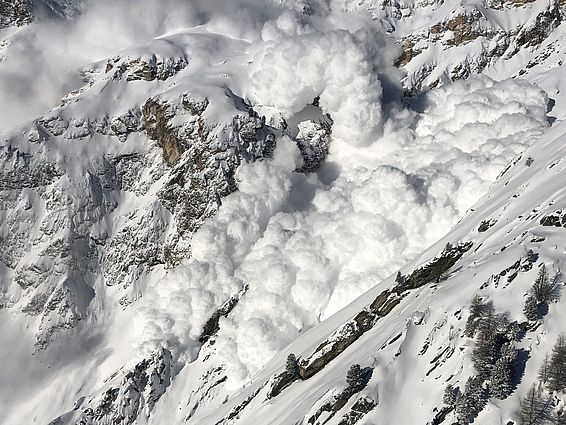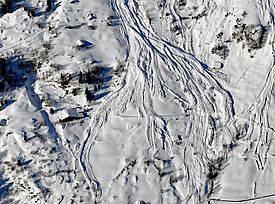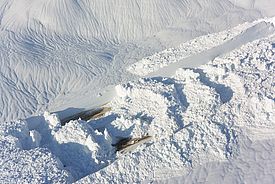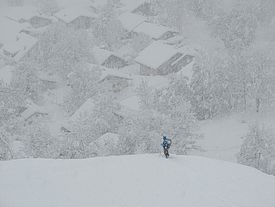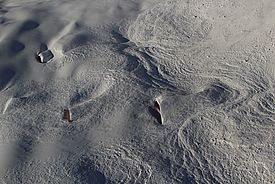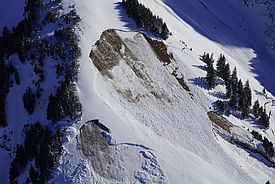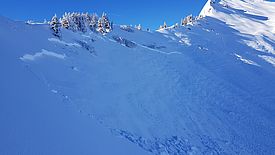07.05.2019 | News SLF
In the north of the Swiss Alps extremely large amounts of snow fell in the winter of 2018/19. For a short time, the predicted avalanche danger level was "very high", which is the highest level on the danger scale. Until the end of April, 19 people lost their lives in avalanche accidents.
In the first half of January the north was exposed to persistent and heavy snowfall. From 12 to 14 January 2019, more than 1 metre of snow fell over a wide area on the northern flank of the Alps, and more than 1.5 m from the Urn Alps to the St. Galler Alps and in northern Prättigau. In the east in particular, January’s precipitation broke previous records. Many stations in Liechtenstein and the northern Grisons measured the second largest or largest ever aggregate snowfall within a ten-day period.
"Very high" avalanche danger over a wide area in the north
These vast quantities of fresh snow, accompanied by storm-force winds, prompted the forecasting of a "very high" avalanche danger (level 5) – the highest on the scale – in large parts of the Swiss Alps for 14 January. Numerous avalanche releases were observed during this period. In view of the low temperatures, many avalanches contained a large portion of snow dust, which enabled some of them to travel great distances. As in the winter of 2017/18, the structural defences, the danger zone maps, and the work of the avalanche authorities, proved invaluable. The only damage reported in this period was to property.
In the warm and dry second half of February, the avalanche situation was predominantly favourable. The main danger was posed by gliding avalanches. In many cases the deep snowpack allowed them to reach a large size. At the end of April, heavy rain up to high altitudes gave rise to numerous large and very large wet snow avalanches, in particular on the main Alpine ridge.
Very dry and mild in the south
While in the north winter did not properly start until the beginning of December, in the south, the first major snowfall already occurred at the end of October. Thereafter, the winter in the south was overall very dry and mild. Only in April were there two more sharp spells of wintry weather with very large amounts of fresh snow and a "high" avalanche danger (level 4).
Numerous destructive avalanches
By the end of April the SLF had received reports of 299 avalanches causing property damage or personal injury. Nineteen people lost their lives in these incidents. The 20-year average number of avalanche deaths in the six-month winter period stands at 21. With the exception of two people, all avalanche victims were winter sportsmen who were in unsecured terrain. Two of the victims were piste patrols: one was killed on duty on an open ski slope, the other while working on piste safety. The cluster of six fatal accidents in the western part of the northern flank of the Alps is striking. These incidents have been attributed to a snowpack that remained unfavourably bonded for a prolonged period, which is a rather unusual occurrence in this region.
Those engaging in snow and mountain sports should give heed to the avalanche danger in the spring and summertime as well. For the time being, the SLF avalanche bulletin will continue to appear daily at 5 pm. In the summer and autumn it is published as necessary (www.slf.ch).
Further information
Winterflash – winter 2018/2019 in review (in German or French)
Fatal avalanche accidents in the 2018/19 hydrological year
All reported avalanche accidents in the current hydrological year

Contact
Copyright
WSL and SLF provide image and sound material free of charge for use in the context of press contributions in connection with this media release. The transfer of this material to image, sound and/or video databases and the sale of the material by third parties are not permitted.
